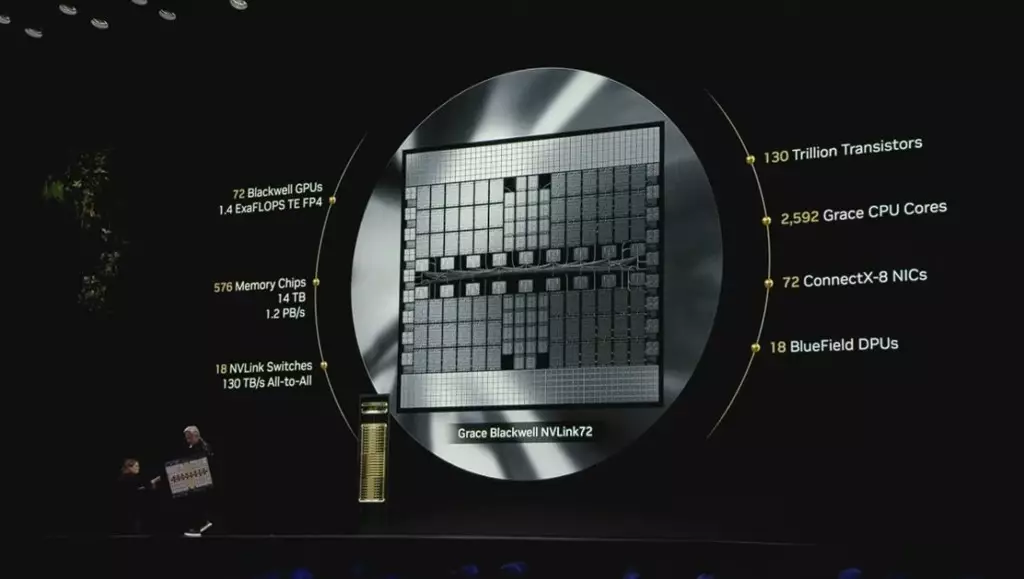In recent developments, the U.S. government has taken a notable step back regarding tariffs on consumer electronics, an action that marks a significant pivot in the ongoing discourse surrounding trade and the technological landscape. Initially, President Donald Trump aggressively pursued a policy of imposing high tariffs on a plethora of goods—most notably electronics—that are heavily sourced from China. However, his recent retreat from potential tech tariffs may signal a deeper understanding of the repercussions such measures might invoke. By exempting crucial products like semiconductors from these tariffs, the administration appears to acknowledge the delicate balance required to maintain competitive pricing in an increasingly globalized marketplace.
The rationale behind this policy shift is multi-faceted. Many experts had predicted disastrous consequences for consumer prices if the U.S. were to implement these tariffs. A hypothetical scenario suggested that a $1,000 iPhone could balloon to an unmanageable $3,500 if subjected to the proposed tariffs—an absurd figure that highlights both the unsustainable nature of such economic policies and the potential backlash from American consumers. In a market where consumer technology is pivotal to sustaining economic momentum, a drastic weight on these products could precipitate a downward spiral affecting the broader economy.
The Role of Semiconductors in the Modern Economy
The decision to exempt semiconductors, integral components that form the backbone of most electronic devices, is particularly significant. These chips are not merely pieces of tech; they are foundational pillars upon which entire industries rely. Interestingly, the U.S. once held the commanding lead in chip manufacturing—but over the years, the landscape has shifted dramatically. Taiwan’s TSMC and other overseas producers have increasingly dominated this market, raising concerns about American competitiveness in critical technologies.
Trump’s administration seems to recognize that merely reverting to tariffs will not reinstill U.S. supremacy in semiconductor production. As Scott Almassy, a partner at PwC, noted, recovery of market share is not a straightforward endeavor. America’s loss of presence in the semiconductor market has grown over decades, and tariffs alone cannot amend this complex issue. The implications extend beyond price hikes—they encompass a strategic evaluation of U.S. manufacturing capabilities and international trade partnerships.
Catalyzing Investment through Incentives
The recent legislation, including the bipartisan U.S. Chips and Science Act, aims to galvanize American manufacturing through incentives and subsidies. However, the timeline for real impact is long and daunting. Experts estimate that even with significant investment, the U.S. may only reclaim approximately 14% market share of chip production in the coming years—a stark reminder of the challenges involved in revitalizing an industry that is both time-sensitive and capital-intensive. As Duncan Stewart from Deloitte asserts, moving the needle from a mere 10% to 14% is an ambitious yet critical goal, reinforcing how formidable the task of reshoring manufacturing truly is.
While this plan represents a step in the right direction, the complexity of global supply chains complicates matters further. U.S. companies like Intel were once pioneers in semiconductor manufacturing, largely due to their superior facilities within the country. As they’ve fallen behind in innovative chip design, newer players such as Nvidia have flourished, capitalizing on strong partnerships with entities like TSMC. This evolution underscores that simply relocating manufacturing does not guarantee job creation in the tech sector.
The Talent Gap and Educational Challenges
The tech industry’s reliance on highly educated individuals with specialized skills raises a critical question: Is the U.S. prepared to meet its workforce needs? Presently, China produces a greater number of trained engineers and tech professionals compared to the U.S., an alarming indication that American educational institutions must prioritize STEM (science, technology, engineering, and mathematics) fields. Without fostering a robust educational framework, the U.S. risks lagging even further behind in the global tech race.
Despite these challenges, the current administration’s commitment to stimulating domestic tech production and investment is commendable. While some may critique the influence of tech lobbying on government policies, acknowledging the sector’s capacity to generate high-value jobs is crucial. The U.S. must actively participate in reshaping the future of tech manufacturing—not solely through tariffs, but through robust investment and education strategies tailored to meet the demands of the digital age.
It is evident that the path to restoring America’s tech prowess involves a multi-pronged approach that cannot rely on tariffs as a panacea. Investments into education, workforce development, and collaboration with industry partners are essential if the U.S. is to rebuild its reputation as a powerhouse in technology innovation and manufacturing.

